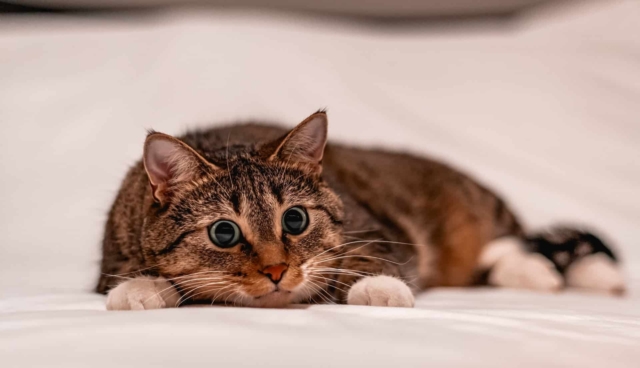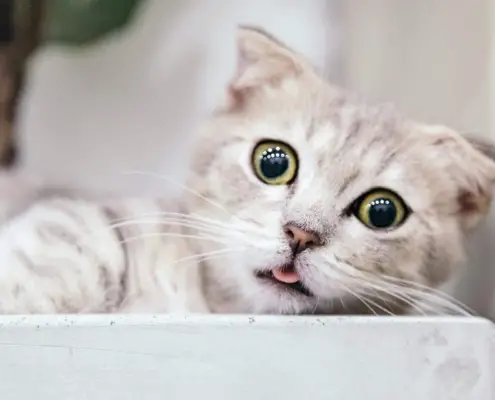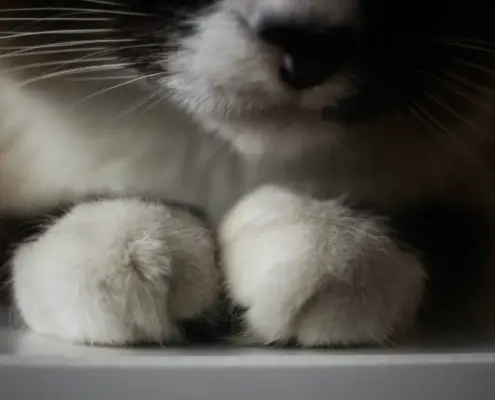
Cats, known for their graceful and independent nature, may seem like they don’t require much physical activity. However, regular exercise is essential for their overall health and well-being. Exercise helps maintain a healthy weight, prevents boredom, and promotes mental stimulation. It also aids in preventing and managing common feline health issues, such as obesity, diabetes, and behavioral problems.
Cats are natural hunters, and exercise mimics their instinctual need to stalk and capture prey. Without proper exercise, cats can become sedentary, leading to weight gain and muscle loss. Regular physical activity helps keep their muscles toned and joints flexible, reducing the risk of arthritis and other mobility issues.
Benefits of exercise for cats
Engaging in regular physical activity provides numerous benefits for cats. One of the main advantages is weight management. Obesity in cats can lead to a range of health problems, including diabetes, heart disease, and joint issues. Exercise helps burn calories, maintain a healthy weight, and prevent these conditions.
Exercise also enhances a cat’s mental well-being. It provides them with an outlet for their energy and natural instincts. Playtime and exercise help reduce stress, anxiety, and boredom in cats, preventing destructive behaviors like scratching furniture or excessive meowing.
Additionally, exercise promotes a strong bond between cats and their owners. Engaging in interactive play and physical activity together strengthens the human-feline relationship and provides a positive outlet for both parties.
Signs that your cat needs more exercise
It is important to recognize the signs that your cat may be in need of more exercise. Cats are masters at hiding discomfort or illness, so it’s crucial to pay attention to any changes in behavior. If your cat appears lethargic, gains weight inexplicably, or seems easily agitated, these could be indications that they are not getting enough exercise.
Cats may exhibit destructive behaviors, such as scratching furniture or excessive grooming, when they are bored or lacking physical activity. They may also become more vocal or restless, seeking attention, if their exercise needs are not met. Keeping an eye out for these signs will help you determine if your cat requires more exercise in their routine.
How much exercise do cats need?
The amount of exercise required for a cat depends on their age, breed, and overall health. Generally, cats should engage in at least 15-20 minutes of active playtime, twice a day. This can be divided into multiple short sessions throughout the day, as cats prefer short bursts of activity.
Kittens and young cats are naturally more energetic and require more exercise than older cats. They may benefit from longer play sessions and interactive toys to keep them stimulated. Older cats may have decreased mobility, and their exercise routine should be adjusted accordingly to avoid overexertion.
It’s important to note that every cat is unique, so it’s essential to observe their individual needs and adjust their exercise routine accordingly. Consulting with a veterinarian can provide specific guidelines based on your cat’s age, breed, and health status.
Indoor exercise ideas for cats
Indoor cats require creative ways to fulfill their exercise needs. Here are some ideas to keep your feline friend active and entertained indoors:
- Interactive toys: Provide your cat with toys that require interaction, such as puzzle feeders or treat-dispensing toys. These toys stimulate their natural hunting instincts and keep them mentally engaged.
- Feather wands and laser pointers: Use feather wands or laser pointers to encourage your cat to chase and pounce. These toys simulate prey and provide an excellent workout for your cat’s muscles and coordination.
- Cat trees and scratching posts: Investing in a cat tree or scratching post provides your cat with an outlet for climbing, scratching, and jumping. These activities engage their muscles and provide mental stimulation.
Outdoor exercise options for cats
If you have an outdoor space or live in a cat-friendly neighborhood, allowing your cat supervised outdoor access can provide additional exercise opportunities. Here are some outdoor options to consider:
- Secure outdoor enclosure: Set up a secure outdoor enclosure or catio where your cat can safely explore the outdoors. This allows them to experience fresh air, sunlight, and the sights and sounds of nature while remaining protected from potential dangers.
- Leash training: Some cats can be trained to walk on a leash and harness. This allows them to explore the outdoors while under your supervision. Start with short walks in a quiet area, gradually increasing the duration and introducing new environments.
- Supervised playtime: Engage in interactive play with your cat outdoors. Use toys like balls or feather wands to encourage running and jumping. This not only provides exercise but also strengthens the bond between you and your feline companion.
Toys and games to keep your cat active
Toys and games are excellent tools to keep your cat active and mentally stimulated. Here are some popular choices:
- Interactive puzzle toys: These toys require your cat to solve a puzzle to access treats or kibble. They engage their problem-solving skills and provide mental stimulation.
- Catnip toys: Many cats are attracted to catnip, and toys infused with catnip can encourage playfulness and exercise.
- Balls and mice: Simple toys like balls or small stuffed mice can provide hours of entertainment for your cat. Encourage them to chase and bat around these toys for exercise.
- Feather wands and fishing rod toys: These toys mimic the movements of birds or prey, stimulating your cat’s natural hunting instincts. Use them to engage your cat in interactive play and exercise.
Incorporating exercise into your cat’s routine
To ensure your cat gets enough exercise, it’s essential to incorporate it into their daily routine. Here are some tips to help you establish an exercise routine for your feline friend:
- Scheduled playtime: Set aside specific times each day for interactive play sessions with your cat. This could be in the morning, evening, or whenever your cat is most active. Consistency is key to establish a routine.
- Use mealtime as an opportunity: Instead of feeding your cat from a regular bowl, use puzzle feeders or treat-dispensing toys. This turns mealtime into a mentally stimulating activity and encourages physical movement.
- Rotate toys: Cats can become bored with the same toys over time. Keep their interest by rotating toys every few days, introducing new ones periodically to keep them engaged.
Common mistakes to avoid when exercising your cat
While exercise is beneficial for cats, it’s important to avoid certain mistakes that can cause harm. Here are some common pitfalls to steer clear of:
- Overexertion: Avoid overexerting your cat, especially if they are older or have underlying health conditions. Gradually increase the intensity and duration of exercise to prevent injury or exhaustion.
- Unsafe toys: Ensure that the toys you provide are safe for your cat to play with. Avoid small parts that can be swallowed or toys with strings that can pose a choking hazard.
- Lack of variety: Cats thrive on variety and novelty. Keep their exercise routine interesting by offering a variety of toys and play styles.
Keeping your feline friend healthy and happy
Regular exercise is crucial for maintaining your cat’s physical and mental well-being. By understanding the importance of exercise and incorporating it into their daily routine, you can help prevent obesity, promote muscle tone, and reduce behavioral issues. Whether through indoor play or supervised outdoor adventures, providing your cat with exercise options ensures a healthy and happy life for your feline friend.
Remember to consult with your veterinarian to create an exercise plan tailored to your cat’s specific needs. With love, care, and engaging playtime, you can keep your feline companion active, stimulated, and content.
If you enjoyed my article, I would appreciate you sharing it with your network.

Sima Ndlebe
Sima writes for CatBuzz. He is interested in Cats, Health and Fitness, and Entrepreneurship.
Published: 13 November 2023
Related Articles
Disclaimer
The content found on CatBuzz.org is presented on an "as is" basis and is intended for general consumer information and education purposes only. Any utilization of this information is voluntary and solely at the user's own risk.
None of the articles or content should be regarded as, or used in place of, veterinary medical advice, diagnosis, or treatment. The information provided on the website is purely for educational and informational intentions and should not be considered a substitute for professional guidance from a veterinarian or other qualified expert. The articles are designed to inform consumers about veterinary healthcare and medical matters that may impact their cat's daily life. It should be noted that this website and its services do not constitute the practice of any form of veterinary medical advice, diagnosis, or treatment. CatBuzz.org explicitly disclaims any liability for any direct or indirect damages or losses that may arise from the use of or reliance on the information contained within the content.
Consumers must consult a veterinarian, veterinary specialist, or another qualified veterinary healthcare provider when seeking advice regarding their cat's health or medical conditions. It is important not to ignore, avoid, or postpone seeking medical advice from a veterinarian or other qualified veterinary healthcare provider solely based on information obtained from this website. If you believe that your cat may be experiencing a medical issue or condition, it is imperative to promptly contact a qualified veterinary healthcare professional.



